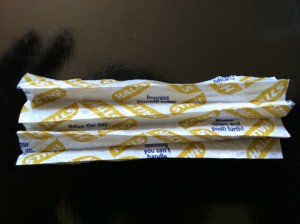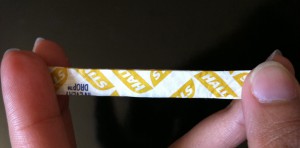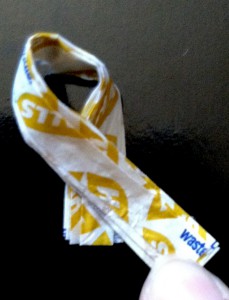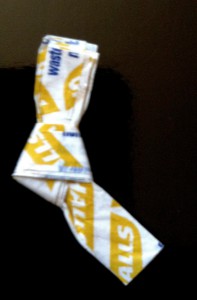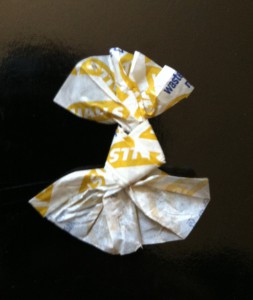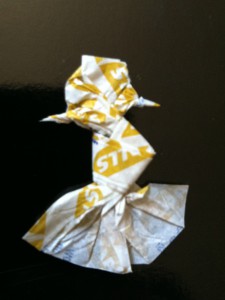Contextual Data: My informant had read this on the Internet, and he shared it with me over Spring Break one night after we came back from New York City. We had been chatting about his car, and as we got home, he remembered this story that he had recently read on the Audi forum of which he was a part. He said he thought it was a crazy story and I asked him if I could record it for the archive. The following is an exact transcript of his story.
“So Edwards Air Force Base has this like, you know, long history of being like this kinda creepy place that, you know, has like a very sketchy military history. They do a lot of really secret, you know, testing and all this other stuff there that, uh… Very classified things, cutting edge stuff happens in Edwards Air Force Base—‘cause it’s in the middle of the desert, and um… whatever. So, uh, it’s also one of the largest bases, so they have a lot of ground, so there’s like, you know, there’s like random buildings and just things from the sixties and when they’re doing all this random testing like way out in the desert of the base that, you know, it’s just land that they own.
“Um… So, this one guy, you know, he’s in the Air Force and, um… I guess he was like on a patrol duty at the base, so they go to this one like place where pretty much nothing has happened since the sixties. It’s like an abandoned, uh, building — couple of buildings way out there. Um, so they get out of the car and, you know, they’re checking around on foot, and uh, they go to this one building and it’s got no doors or windows—anything, except for just one door in the front of it, right? And it’s made of concrete. Uh, it’s just got a single door. And… the guy, you know, just pulls the door—you know, the door handle to make sure it’s locked. Figured it’s definitely going to be locked, and it was unlocked. It was open. And, uh… The door opens and he looks at his buddy and he’s like ‘…Should we?’ And the other guy’s like, ‘Hell yes.’ [Laughs.] ‘Let’s do—Let’s go.’ So they walk inside and it’s just, um, one giant room in this building, right? There’s just the one door on the outside, one giant room, it’s all concrete, and there’s nothing but a set of stairs just going down in the middle of the room, right? And uh… They pull their flashlights out ‘cause there’s no lights, that, you know—no light switches or anything. And they… And so they pull out, you know, their flashlights and their pistols, you know, the way that they — you see them in movies. [Mimes with his hands in front of him, the “flashlight” on top in his left hand and the “pistol” below it, in his right.] They kind of hold it like this—one over the other. And they start going down this stairwell. Now it’s, you know, it’s daylight outside but it’s dark in this thing and they’re going down these stairs. And he says the stairs go down for…What he thinks is like a hundred feet. Like ten stories. He’s just going down these stairs and they’re just like—it’s just like this narrow stairwell they keep going down. It’s like a tunnel basically. Um, and you know, he’s like at this point things are getting—already feel very weird. It’s already really sketchy.
“Um, and they get to the bottom, and then it’s just this hallway that goes forward and they go forward in the hallway and there’s this door. And he looks at the other guy and uh, then they walk in. And he says all that’s in this room—again it’s like this one large concrete room. They’re now like, you know, he thinks like a hundred feet underground. There’s nothing but cameras on the walls, like near the ceiling. And in the middle of the room is this giant chair. [Mimes really wide with his hands], like metal chair. It’s got like wrist straps and feet straps—like ankle straps or whatever. And underneath the chair is a drain, like a metal drain. And the whole concrete floor, the whole place just kind of slopes gently down in the middle. So you don’t know like… What was there, but there, you know—could’ve been torture, whatever. But, um, he… At this point he’s getting like really weirded out, and there’s this other room on the side, and he looks in there. And um… There’s like these huge stretchers and these huge things that are bigger than they’re—than the ones that are meant for people. It’s literally like—and the chair is bigger than one that’s meant for people. You know, it’s like, very freaky. And then he…He talks to the other guy, and he—The other guys just points up and one of the cameras had just turned and was looking right at them. Um… So they just freaked out. He’s like, ‘We gotta go.’ And they just got way—you know they went all the way back upstairs. And as soon as they got back upstairs, the guy’s cellphone rings. And it’s like the base telling him they need to get back to base right now. And they didn’t explain why or whatever. But they’re just like, ‘You need to get back. We’ve called you like three times. Why was your cellphone off?’ He’s like, ‘It wasn’t off. I just didn’t have service.’ And they’re like, ‘What’d you mean you didn’t have service?’ He’s like, ‘Wha—Never mind.’ [Laughs.] And then that was it. He, like, never found out anything more about it.”
– End Transcript –
When I asked my informant about the significance of this story, he alluded back to how he began the story: that Edwards Air Force Base has a history of being this “creepy” place, surrounded with all sorts of conspiracy theories. He was a little skeptical of this story — he first read it online on the forum where he actually finds information about his car; some guy had posted it there as a first hand account. But he’d read some of the guy’s other posts, and he seemed like a respectable enough person, who had “his head screwed on right.” Given all the other things that my informant has heard about military bases — especially the remote ones out in the middle of the desert — he wouldn’t be surprised if such a place as the one described actually existed, which is one of the reasons why he found it interesting to share. But he doesn’t believe the larger conspiracies surrounding the base (i.e. that there were actual alien encounters there.) Beyond that, he just thinks that this is a fun, creepy story to tell, and he has shared it with a few other friends.
On it’s own, this story is more of a memorate than a legend, as it’s a personal account that contributes to the larger urban legends and conspiracy theories that surround Edwards AFB. There are many different stories about such bases and military sites having underground tunnels and being the sites of extra terrestrial encounters. Some people would therefore enjoy telling this story because they think it’s true, others because they think it validates the conspiracy theories, and others simply because it’s a great story to tell to spook people out. For my brother, it was a combination of the first and the last reason.

